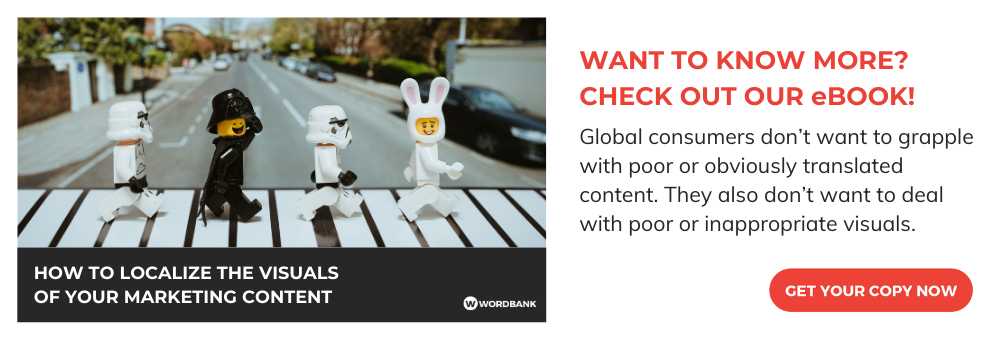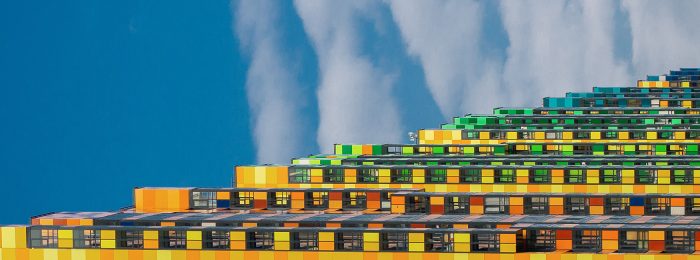Marketing is about engagement and inspiring action. It’s about conveying the essence of a brand, the value of a product or service, the reason to choose one brand over another. Successful marketing depends greatly on creative media localization. On the development of language and visuals delivered in the right medium, at the right time, to the right audience.
In the same way that the right words are crucial to conveying brand identity, the visual elements of creative media can make or break the brand experience for international audiences. The nature and purpose of the content should inform the level of media localization expertise required to maximize user experience and engagement.
WHAT IS CREATIVE MEDIA LOCALIZATION?
Creative media refers to published marketing content that’s being localized for international markets. It can be for print, downloadable assets, or online and interactive formats. Creative media localization is about adapting both text and visual content for international consumers, maintaining consistency of look and feel across locales.
When it comes to marketing localization, the goal is typically to produce an authentic user experience to drive engagement. The result of a media localization process varies greatly depending on the approach. Understanding the differences is key to success.
WAYS TO APPROACH CREATIVE MEDIA LOCALIZATION
The range of creative media services is a continuum. On one end of the spectrum is media engineering, which is more technical in nature. On the other end is creative development, which requires more attention to design and UX. Here are the key differences.
MEDIA ENGINEERING: ONE-TO-MANY
The focus of media engineering is to produce efficiently localized, ready-to-publish versions of the original content in multiple languages. It’s highly efficient from a localization delivery perspective. So it works well for many types of informational content with simple design. Media engineering process is largely automatable and focused primarily on localizing the text elements of a source design. The outcome is multiple language versions with design and layout based on the original source.
Below is an example of marketing localization using media engineering. Hilton’s goal was to attract international visitors to a destination, so the approach is a simple, readily localizable design that results in multiple language versions. There is no great need for imagery or color choice adaptation, and the original design accommodates text expansion and international typographical standards.
The process of media engineering typically includes the following steps:
- Extracting content from the source format
- Localizing the text
- Reverse engineering the localized text back into the original design, making sure local typographical standards are applied
- In-context review of the localized design
- Final proof, layout + tech checks
CREATIVE DEVELOPMENT
For more creative marketing content focused on engagement and local relevance to drive results, one-to-many media localization may not cut it. The greater the need to drive engagement and inspire action, the more important visual and user experience becomes.
The goal of creative development is original, locally relevant assets designed for a specific purpose related to engagement, lead generation, etc. This type of localization isn’t automated. It requires heavy design skill from in-country experts, maintaining brand and messaging goals while creating a visual experience designed for each locale.
The example below illustrates media localization based on a creative development process. The goal of this public health creative for the United Nations was visual engagement via social media. There’s a consistent look and feel to the designs, but they’re not obviously “engineered.” The concept and messaging is defined but adapted for each market to increase engagement around a central theme. This creative resulted in multiple language versions with heavy locale-specific visual adaptation.
Here are the key steps:
- From-scratch concepting and design based on a creative brief
- Copywriting & transcreation
- Localizing font & design to convey the concept/message
- Locale-specific visuals and color choices to increase connection and engagement with superhero theme
FINAL THOUGHT
Media localization varies greatly depending on the approach, as well as the goal. Do you want to produce as much multilingual content as possible or create an authentic brand experience to drive engagement by maximizing local relevance? The more competitive the market you’re operating in, the more important it is to think beyond pure efficiency of localized content delivery. The key is to match the level of effort with the nature and purpose of your content.
Whichever approach makes the most sense for your goals – or a hybrid of the two – remember that content quality is about the target audience’s experience of your content and your brand. Don’t overlook the importance of the visual and user experience in creative media localization. They can be the difference between engagement and indifference – or disaster.










